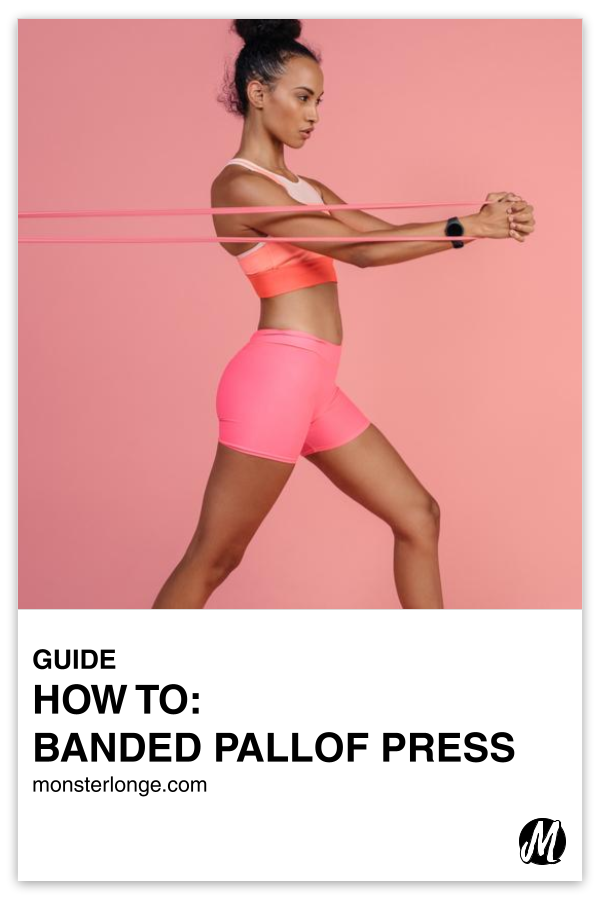
How To: Banded Pallof Press
Crunches and the multitude of variations are great for chiseled abs, especially when used in conjunction with a calorie deficit to strip the midsection of fat so what’s underneath can be rubbed in everyone’s face. Be that as it may, crunches and the multitude of variations aren’t so great for the development of a strong and stable core.
This is where the Pallof press enters.
Named after physical therapist John Pallof, who came up with the exercise in 2006, the Pallof press works the muscles responsible for trunk rotation via the active resistance of the rotational pull of the band (or cable, if a pulley system is being used for the exercise) when you extend your arms away from your body during execution of the movement. This anti-rotation engages the entire core musculature and in time leads to stabilization of the spine, which in turn results in a stronger core.
Being that twisting and turning mishaps are a common cause of back injury, it makes sense to train your muscles to resist unwanted rotation. And because a strong core is necessary for the lifting of heavier and heavier loads, it also makes sense to work on core stabilization if you want to improve your squat, deadlift, or any of your other poverty lifts.
But if it doesn’t make sense to you to do the Pallof press, I don’t blame you. After all, how many chicks are going to be impressed when you walk up to them, lift your shirt up, and point to your stable core?!?!
The answer is NONE!!!
Now reverse that.
When you walk up to chicks, lift your shirt up, and point to your chiseled abs like a true player does, how many of them are going to be impressed?
The answer is ALL OF ‘EM!!!
INSTRUCTIONS
1). Loop a powerlifting strength band, also known as a pull-up assistance band, around a stanchion at chest height.1Yes, instead of simply saying a beam, pole, fence, power rack, or other upright object to better give you an idea of what you can loop the band around, I’m using the term “stanchion” to show off my vocabulary!
2). Stand perpendicular to where the band is attached and grasp it in front of you with both hands and interlock your fingers around it.2Psst…”perpendicular” is a fancy way of saying sideways.
3). Step away from the band’s anchor point until there’s tension in the band. Once there’s enough resistance, stand with your legs shoulder-width apart, knees slightly bent, and hips pushed back. Then press your fists into your sternum and imagine you’re tucking your shoulder blades into your back jean pockets. This is the starting position.
4). Brace your core as if someone were getting ready to punch you in the stomach. Slowly extend your arms away from your chest until your elbows are locked out straight.
5). Without allowing your shoulders to drift forward, pause and flex your midsection while remaining with your hips facing forward so your body doesn’t twist back toward the stanchion.3NOTE: You should feel tension in your core and back muscles, as well as those in your hips and thighs. If not, then you have a clear indication that you’re doing something wrong and have managed to fuck up relatively simple instructions. Kudos to you!
6). With your lower back flat and abs still contracted, slowly bring your hands back to your chest while keeping your arms close to your body.
7). Repeat.
For a workout routine that possibly includes the Pallof press, as well as other exercises geared specifically to your goals, training experience, injury history, and available equipment, then find out more HERE
Glossary: abs, arms, caloric deficit, chest, crunches, deadlift, exercise, exercise equipment, goal, muscle, routine
- How To Eat Healthy During Thanksgiving - November 20, 2024
- Weight Loss Tip: no.2620 - November 20, 2024
- Is Going To The Gym Once A Week Enough? - November 19, 2024
